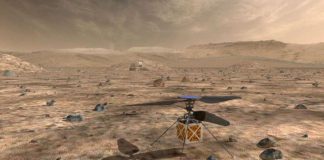AUGUST 25, 2018

NASA obviously has a huge interest in mankind exploring space, so it would make sense that the administration’s newly-appointed chief shares the same interests. In a recent interview with Space.com, NASA’s newly-appointed boss Jim Bridenstine makes a couple of interesting declarations, but starts by assuring everyone that he wants to get as many humans as possible off of planet Earth.
His remarks come as many in the scientific community are questioning president Trump’s new push to get humans back to the Moon rather than setting our sights deeper in the Solar System.
“We want lots of humans in space,” Bridenstine told the site, citing past downtime of manned rocket launches as a dark mark on America’s space exploration record. “When you look back at history, look back at the end of the Apollo program, 1972 when we didn’t go back to the moon… you look back and there was a period of time there after Apollo and before the space shuttles when we had a gap of human spaceflight capability.”
Trump has made it clear that he wants NASA to get astronauts back to the Moon, but rarely elaborates on the scientific progress that could be made by achieving that feat. Bridenstine used his interview to expand on things a bit, noting that manned Moon missions of the past focused on similar areas and that there’s probably more interesting things to find if we go back.
One of the more interesting things Bridenstine touched on during the interview is the idea of using the Moon as a “gateway” for other missions. This is a concept that has been kicked around for a while, and it makes a lot of sense: Use lunar bases as off-world jumping-off points for missions that would take astronauts even deeper into space, perhaps to Mars or beyond. He also noted that mankind could be headed to Mars by 2030, which is something that just about everyone agrees is completely unrealistic.
Bridenstine has a plan, however. Since the budget is clearly the biggest hurdle the space agency must overcome to meet its Mars 2030 dreams, he says that commercializing the Moon gateway would be a way to generate funding from companies and international partners. “There is no other architecture that I have been presented with, given the current budgets that we have, that enable all of that,” he said.
Of course, first NASA would need to actually get back to the Moon and build the base, which is a lot harder (and more expensive) than it sounds. We’ll see how thing progress over the next few years, but the clock is ticking and Mars seems to be getting farther and farther away.
Courtesy: BGR










































































































